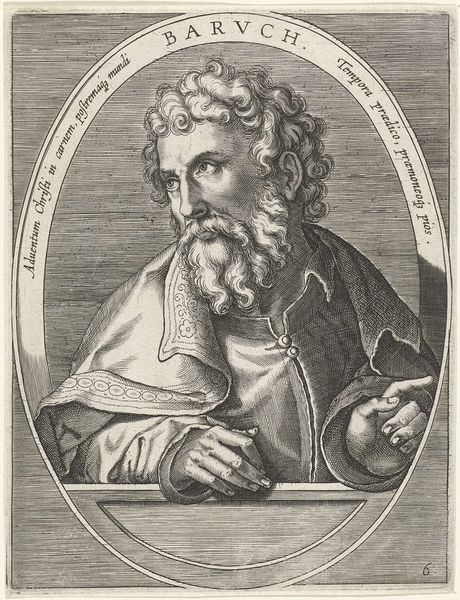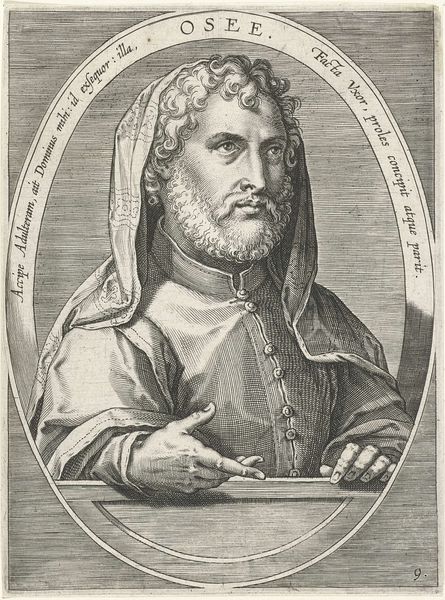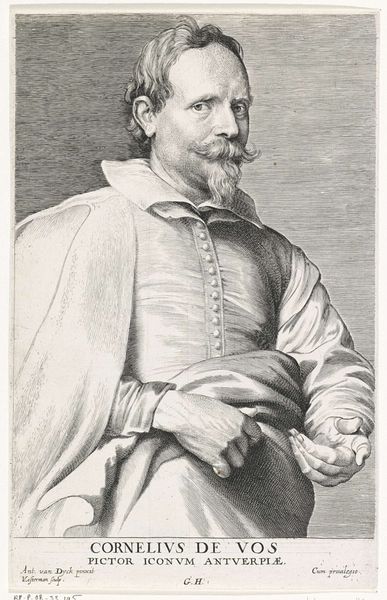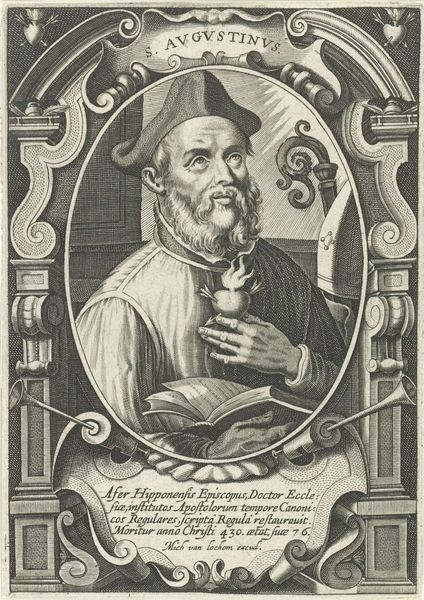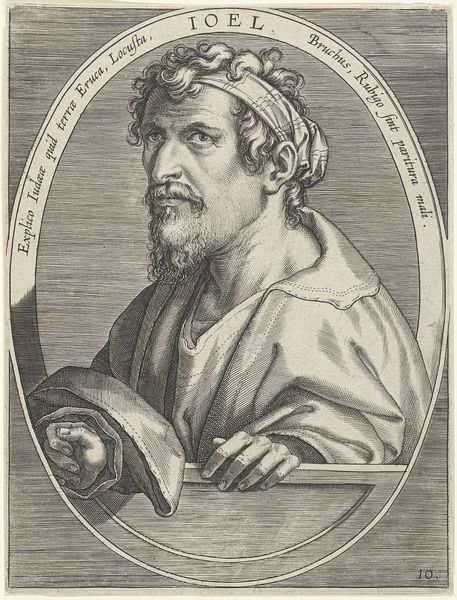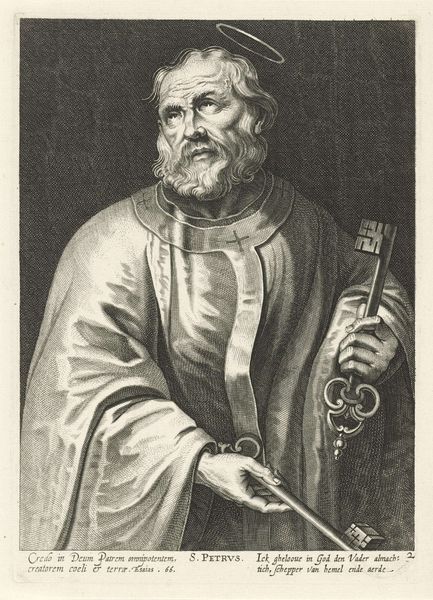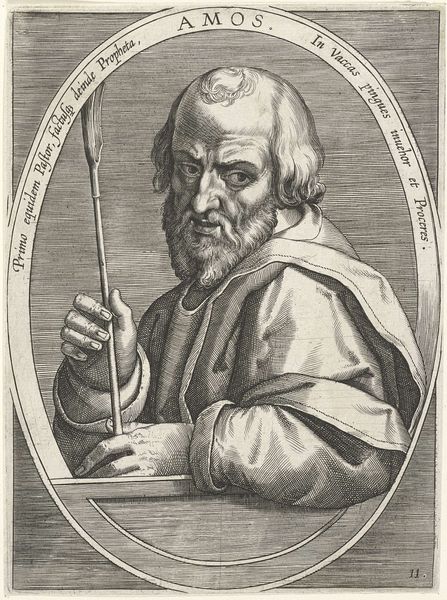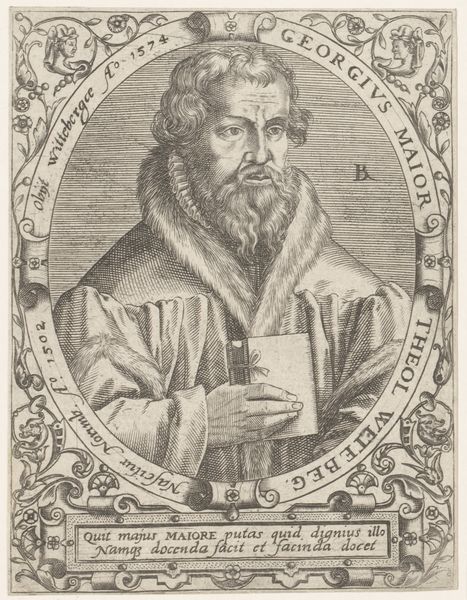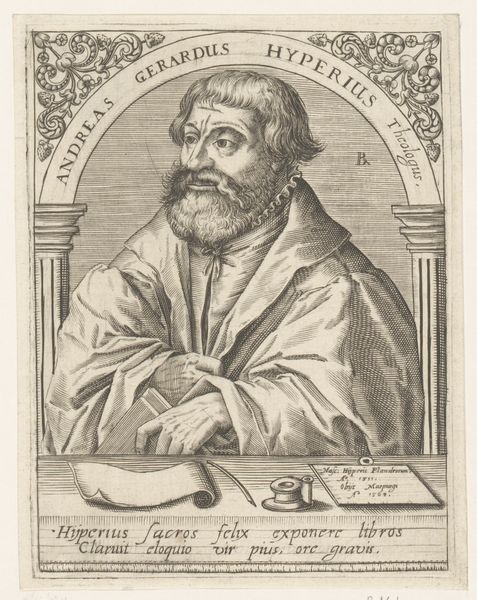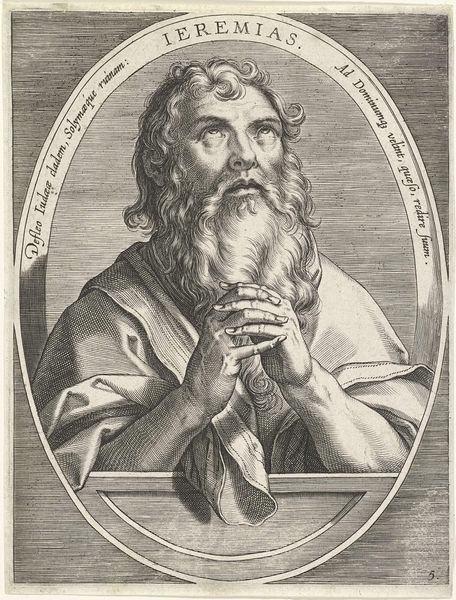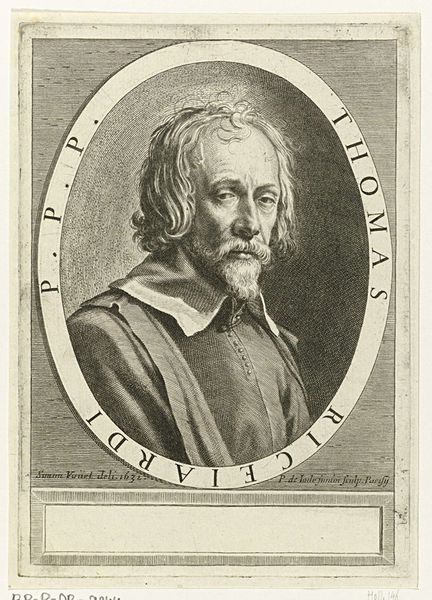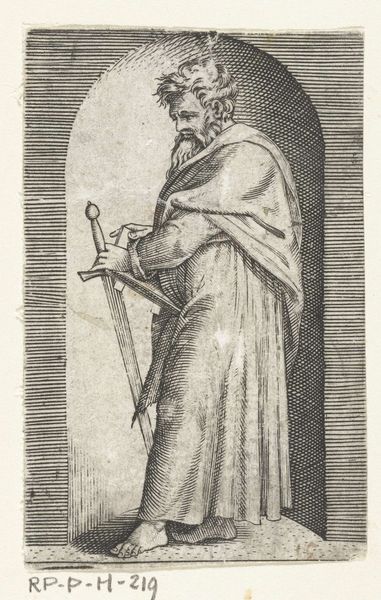
engraving
#
portrait
#
11_renaissance
#
engraving
Dimensions: height 175 mm, width 135 mm
Copyright: Rijks Museum: Open Domain
This engraving of Jona was made by Cornelis Galle I in the early 17th century. Notice how Jona places his hand on his chest, a gesture of supplication and humility, while the other hand points downwards, perhaps indicating the depths of the whale's belly where he spent three days. This motif of the hand—a language in itself—reappears across centuries. Consider how Renaissance artists employed elaborate hand gestures to convey complex emotions, or how certain hand positions became codified in religious iconography to denote blessings. Even earlier, the hand appeared in ancient Roman rhetoric to convey a powerful effect on an audience. It is fascinating to consider how such a simple gesture can carry so much cultural and psychological weight, passed down through generations. This image is a potent reminder of our shared human experience. It speaks to the subconscious level where fear, hope, and repentance reside. The gesture is non-linear; resurfacing, evolving, and taking on new meanings in different historical contexts.
Comments
No comments
Be the first to comment and join the conversation on the ultimate creative platform.
